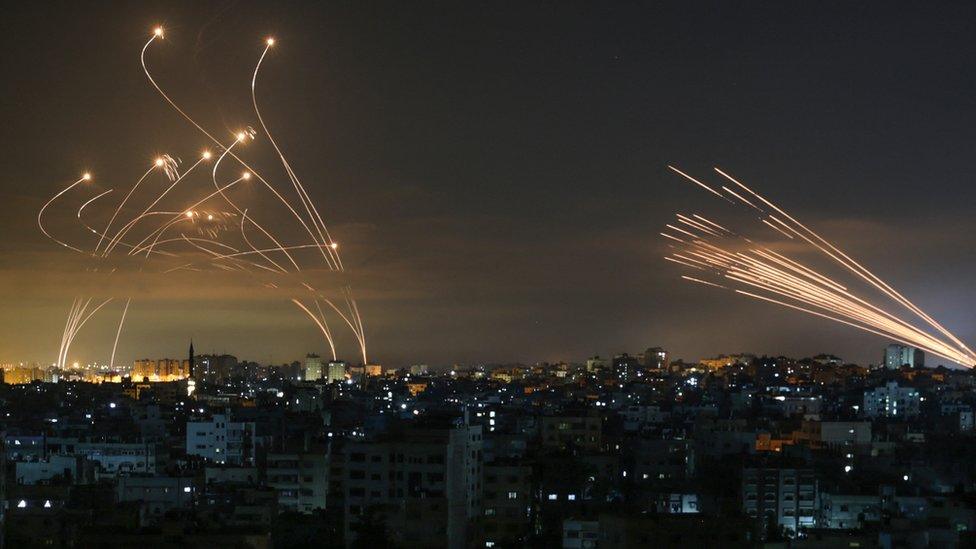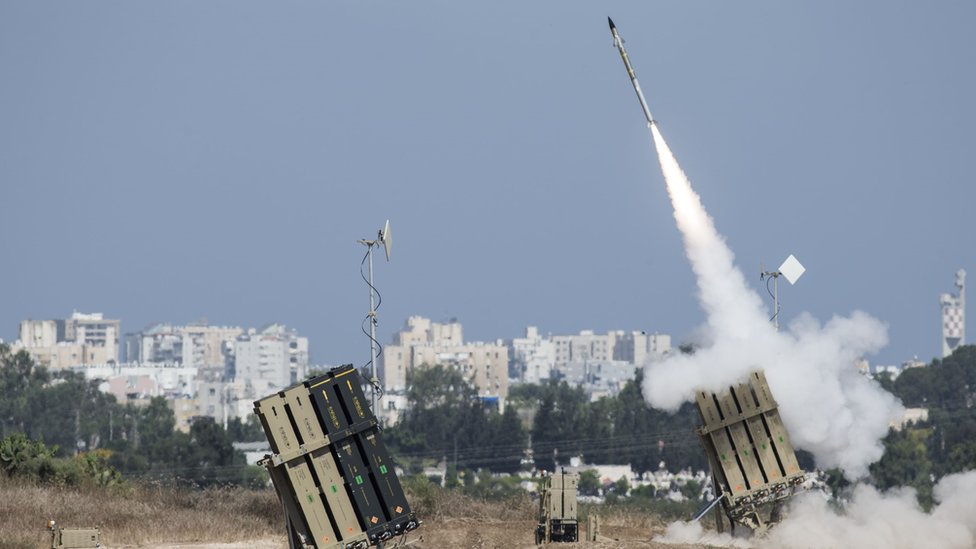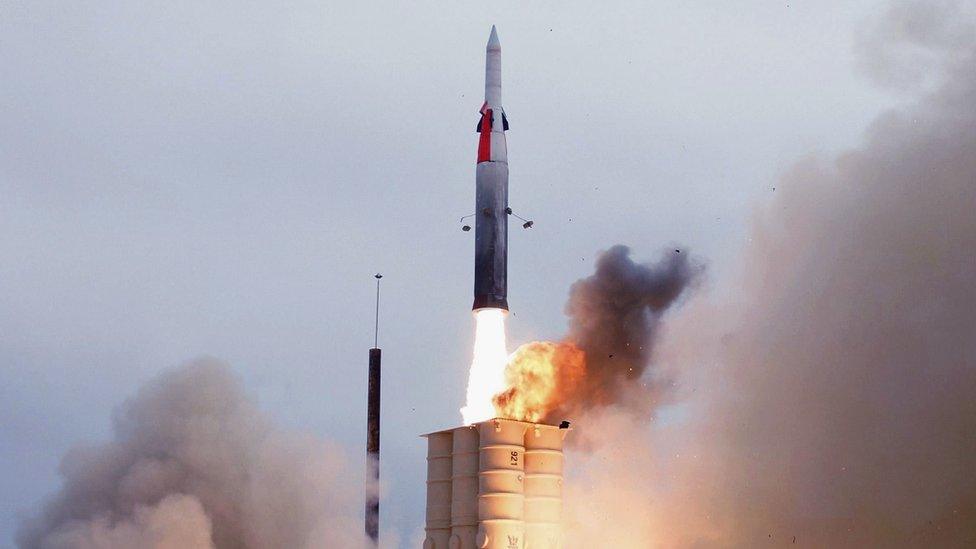What are Israel’s Iron Dome, David’s Sling, Arrow and Thaad missile defences?
- Published

Israel has repeatedly used its elaborate system of air defences to counter missile and drone attacks in recent months.
It has come under attack from Iran, Hezbollah in Lebanon, Hamas in Gaza and the Houthi rebels in Yemen.
The US is sending a high-altitude anti-missile system to bolster Israel's defences.
Its Terminal High-Altitude Area Defense (Thaad) battery will sit alongside Israel's existing systems - Iron Dome, David's Sling, Arrow 2 and Arrow 3.
The defences are designed to intercept incoming missiles at a variety of altitudes and distances.

It is thought that Israel used all its missile defence systems available at that time to counter the attack from Iran on 1 October. This involved more than 180 missiles, some of which struck Israeli territory.
Israel is still expected to retaliate, as it did after Iran launched more than 300 drones and missiles in April. The Israel Defense Forces (IDF) claimed that 99% of the Iranian projectiles launched in April's attack were intercepted.
However, the missile shield did not prevent a Hezbollah drone strike on an Israeli army base near Binyamina in northern Israel on 13 October, which killed four men and injured dozens more.
How does Iron Dome work?
Iron Dome is the best known of Israel's missile shields.
It is designed to intercept short-range rockets, as well as shells and mortars, at ranges of between 4km and 70km from the missile launcher.
There are Iron Dome batteries across Israel. Each one has three or four launchers containing 20 interceptor missiles each.

Iron Dome detects and tracks incoming rockets with radar and calculates which ones are likely to reach populated areas. It then fires missiles at these rockets, leaving the others to fall on open ground.
The IDF has previously claimed that Iron Dome destroys 90% of the rockets it targets. Its "Tamir" missiles are thought to cost about $50,000 each.
The system was developed after the 2006 "Summer War" between Israel and Hezbollah. The Lebanon-based armed group fired nearly 4,000 rockets into Israel, causing huge damage and killing dozens of citizens.

Iron Dome is said to be the world's best-tested missile defence system
Designed by Israeli firms Rafael Advanced Defense Systems and Israel Aerospace Industries - with some US support - Iron Dome was deployed in 2011.
It was first used in combat that year, intercepting a rocket fired from Gaza.
Since October 2023, Iron Dome missiles have intercepted thousands of rockets fired by Hamas and other militant groups from Gaza.
How does David's Sling work?
David's Sling is designed to destroy longer-range rockets, cruise missiles and medium-range or long-range ballistic missiles from a distance of up to 300km.
Jointly developed by Rafael Advanced Defense Systems of Israel and Raytheon of the US, it started operating in 2017.

A David's Sling launcher pictured during a military exercise
Like Iron Dome, David's Sling only targets missiles which threaten built-up areas.
Both David's Sling and Iron Dome are designed also to intercept aircraft, drones and cruise missiles.
Each David's Sling "Stunner" missile costs about $1m.
How do Arrow 2 and Arrow 3 work?
Arrow 2 is designed to destroy short-range and medium-range ballistic missiles while they are flying through the upper atmosphere, about 50km above the Earth.
Work started on the system after the First Gulf War in 1991, when Iraq fired dozens of Soviet-made Scud missiles into Israel. It entered service in 2000.
It can detect missiles from 500km away. It intercepts them at comparatively short range - at distances of up to 100km from the launch site.
Its missiles travel at nine times the speed of sound, and it can fire at up to 14 targets at once.
Arrow 2 was reportedly used in combat for the first time in 2017, to shoot down a Syrian surface-to-air missile.

The Arrow 2 system is designed to intercept ballistic missiles in Earth's upper atmosphere
Arrow 3 is designed to intercept long-range ballistic missiles as they travel at the top of their arc, outside the Earth's atmosphere. It has a range of 2,400km.
It was used in combat in 2023, to intercept a ballistic missile which the Houthi rebels in Yemen fired at the coastal city of Eilat, in southern Israel.
The system was developed by state-owned Israel Aerospace Industries, with help from the US company Boeing.
How does the US-made Thaad system work?
After Iran's October attack on Israel, the US said it would supply Israel with a Thaad battery.
Thaad missiles are designed to work in a similar way to David's Sling, intercepting enemy missiles in their last stage of flight, at a range of 93-125 miles (150-200km), external.
The system can intercept enemy missiles inside and outside the Earth's atmosphere.
Thaad batteries typically comprise six launchers, each of which contains eight missiles.
The US is deploying about 100 troops to operate the battery being sent to Israel. Some personnel and parts of the Thaad system have already arrived.
US armed forces have been using Thaad since 2015, and the US has sold the system to both Saudi Arabia and the United Arab Emirates.